
The cost to paint a deck depends on its size, design, and whether you DIY. Read this guide to help set the budget for your deck painting project.


The average amount of stain needed depends on the surface area.
Calculating precise square footage will require multiple formulas.
Our formula includes a spillage coefficient (because nobody works perfectly).
The average deck with railing and stairs will require between 3 and 4.5 gallons of stain.
How much stain do I need for my deck? Calculating the right number is key when considering the project as a whole. This calculator makes it simple to understand and calculate the total surface area of your deck, including railings and stairs. Let’s dive in.
Determining how much stain is required comes down to finding out the square footage you need to stain and comparing that to your stain’s coverage rate. While not all decks have railings and stairs, you can use the reference amounts below to approximate the stain required for your deck. The numbers below assume a stain that has a coverage rate of 200 square feet per gallon and factors in 3% spillage.
| Deck surface area (sq ft.) | Gallons of stain needed | Gallons of stain needed with railings | Gallons of stain needed with 4 stairs and railings |
|---|---|---|---|
| 100 | 1.1 | 1.3 | 1.4 |
| 200 | 2.1 | 2.3 | 2.4 |
| 300 | 3.1 | 3.3 | 3.4 |
| 400 | 4.2 | 4.3 | 4.4 |
| 500 | 5.2 | 5.3 | 5.5 |
Deck stain comes in different coverage amounts, but commonly, a gallon will cover between 150 and 225 square feet. You’ll need to measure your deck first to determine which stain to buy, so use the calculator below to come up with a number. Remember to multiply by the spillage coefficient at the end. A little waste is normal, as nobody works perfectly clean.
Stain needed (in gallons) = Deck area (square feet) x number of coats required / stain coverage rate (square feet per gallon) x 1.03 (spillage)
Make sure you measure your deck's surface area accurately by double-checking all measurements. Don’t forget to add any side pieces, railings, or stairs to your calculations. Only once you have a final, accurate number can you purchase stain.
If your deck is a standard rectangle, consider yourself lucky, as these are the simplest decks to measure. Simply measure the length and width of the deck using a tape measure, and multiply the two numbers together to get your deck’s total square footage.
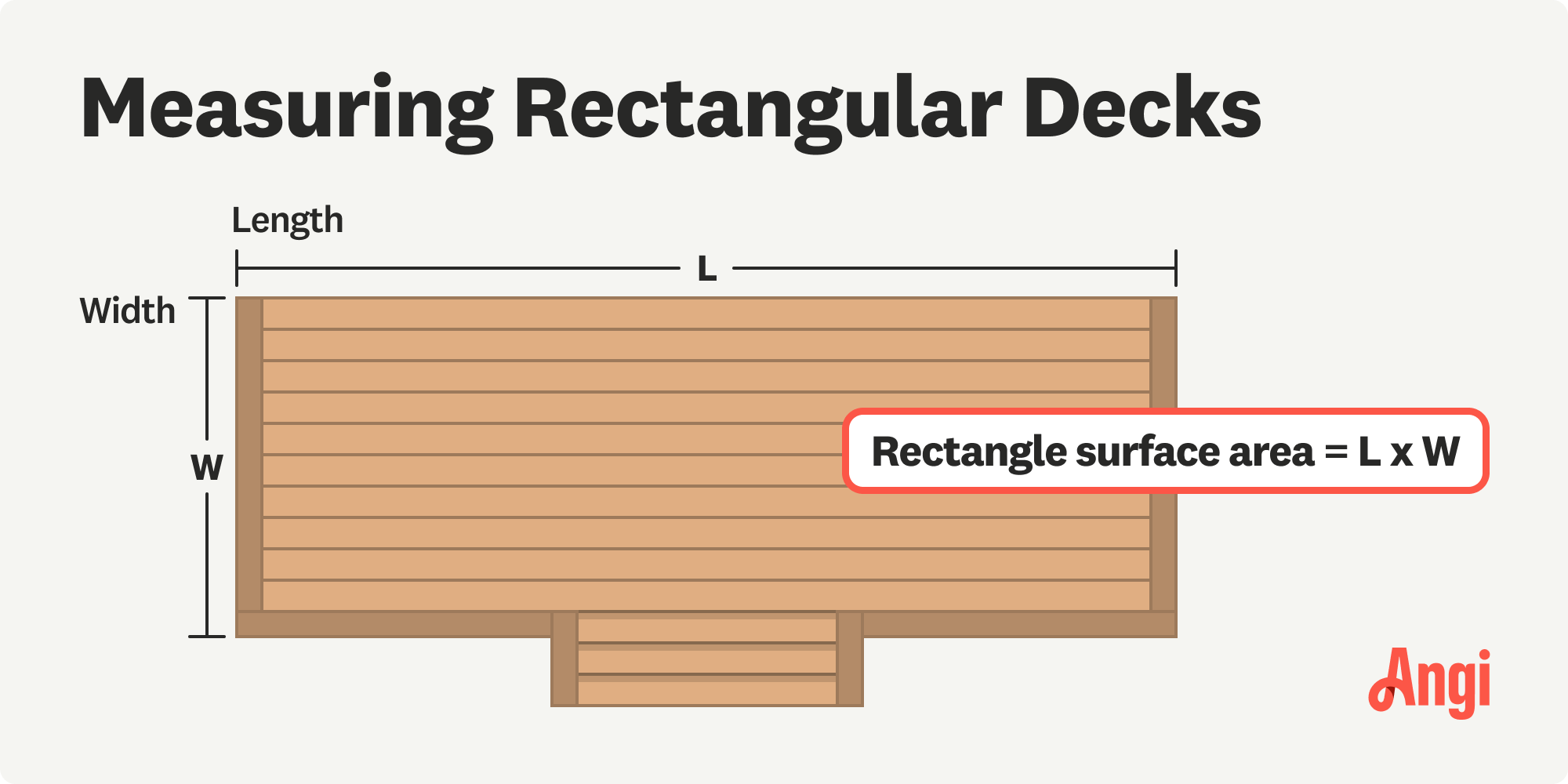
If your deck isn’t rectangular, don’t worry. You can break it down into individual sections and add them together later. Measure the largest rectangular section first, then break the rest into smaller pieces (usually triangles).
You’ll calculate these by multiplying the length of the triangle by the height, then dividing that number by two. This is how you calculate the area for all triangles, regardless of their shape.
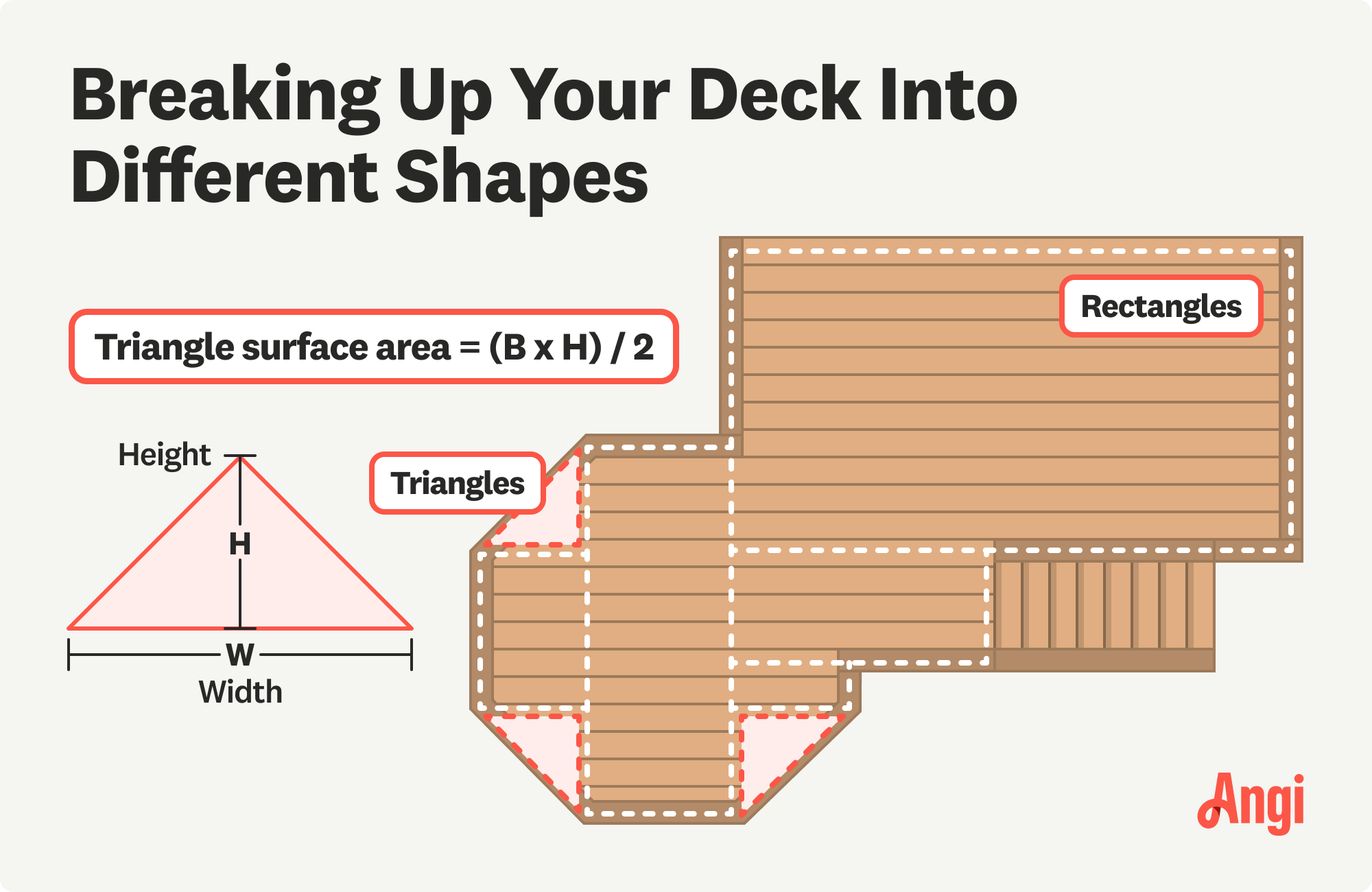
Stairs are almost always rectangular, so measuring them is simple. Use the same length times width (height) formula you used to calculate the rectangular portion of your deck. You’d do this for each section of the stairs—the section you stand on is one measurement, as is the vertical riser section. If your stair has a lip, make sure to measure that too (if you plan on staining its underside).
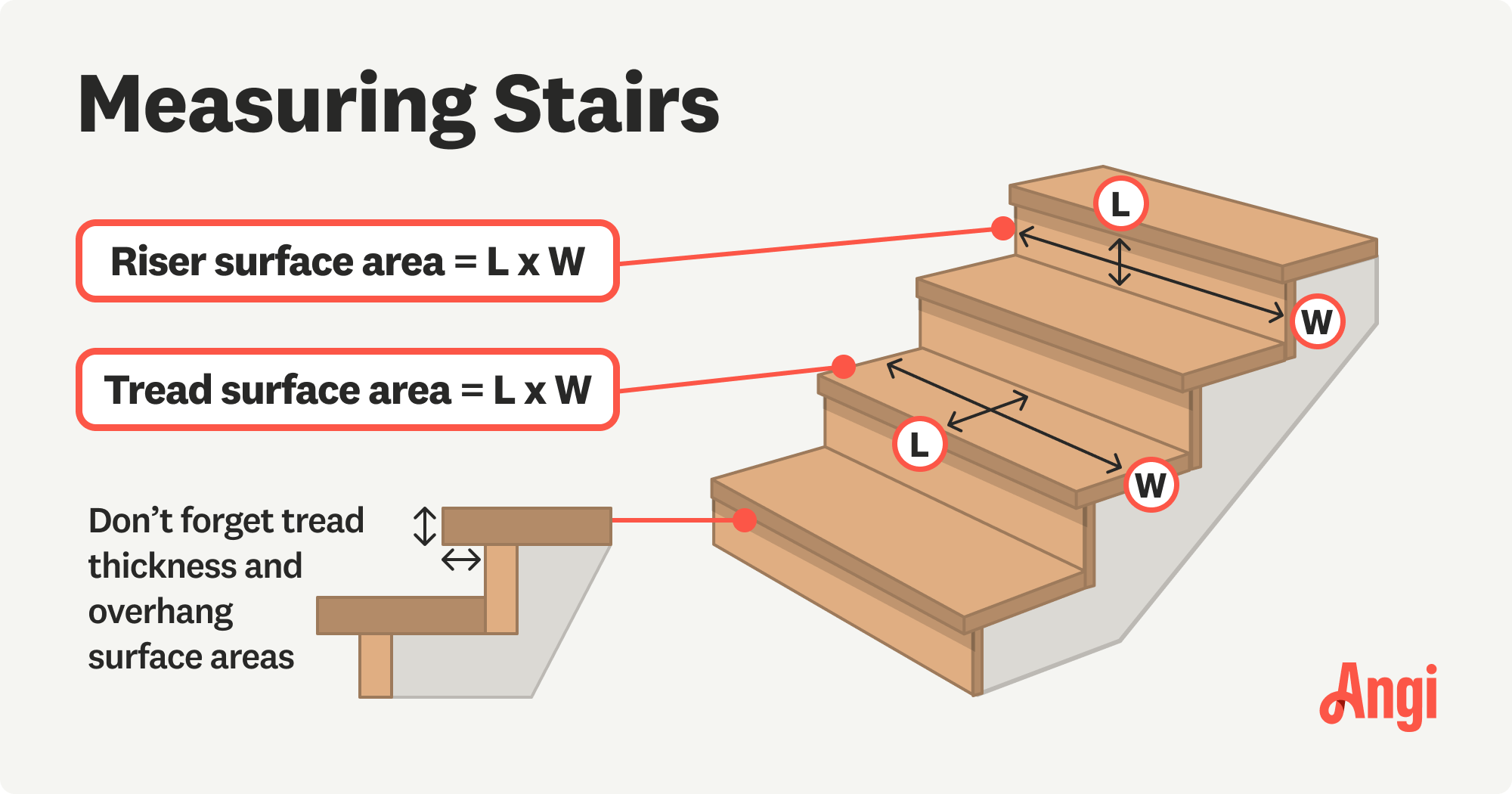
Calculating railing measurements is by far the most difficult part of this project. However, it isn’t impossible. The formula involves finding the height and length of the railing and the surface area of one of the posts, then adding them together.
However, there’s a trick. Wrap a measuring tape around a post. That is now your width measurement, as an unrolled post becomes a rectangle. Multiply that by the post's height, and you now have the surface area for one post. Simply add the number of posts, multiply by their area per post, and add the railing length and height.

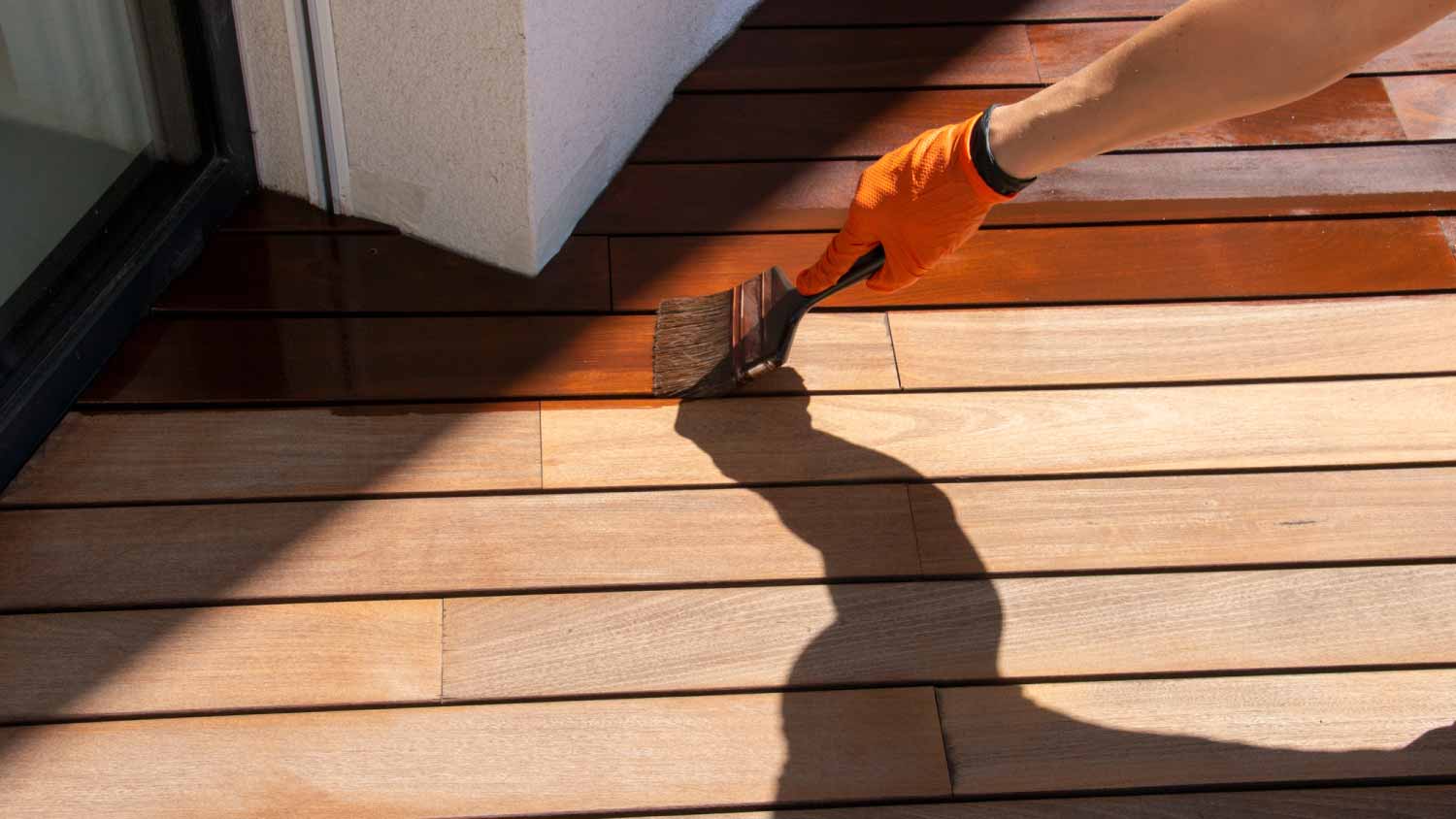
A local deck staining pro is who to call to stain your deck for you. These pros have the expertise and tools required to complete the job to the highest standard. If you choose to go the DIY route, you can lean on a local pro to assist with any questions you might have about measurements, stains, and finishes.
From average costs to expert advice, get all the answers you need to get your job done.

The cost to paint a deck depends on its size, design, and whether you DIY. Read this guide to help set the budget for your deck painting project.

The cost to paint vinyl siding depends on the type of paint, square footage, labor, and more. Check out this guide to help you budget for painting vinyl siding.

The cost to paint aluminum siding depends on several factors, including type of paint and labor cost. What are the pros and cons of DIY or hiring a painter?

Picking the right blue exterior house paint is easier said than done, but knowing which shades best suit the task will help you make the right choice.
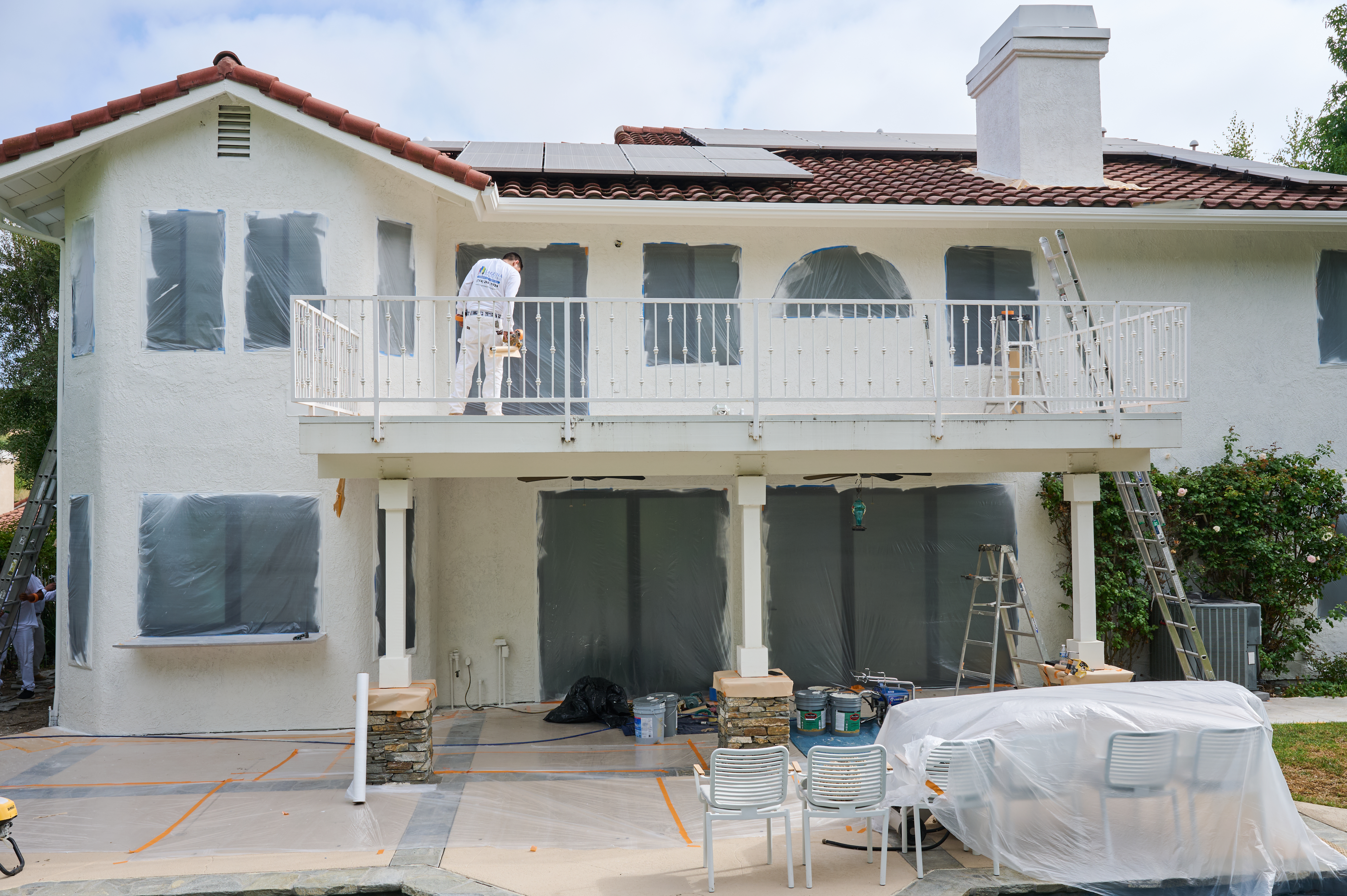
The best time to paint a home’s exterior depends on where you live. Read this to learn more about when to paint your house.

Discover the perfect shutter colors to complement your gray house, elevate its curb appeal, and enhance the beauty and character of your home.